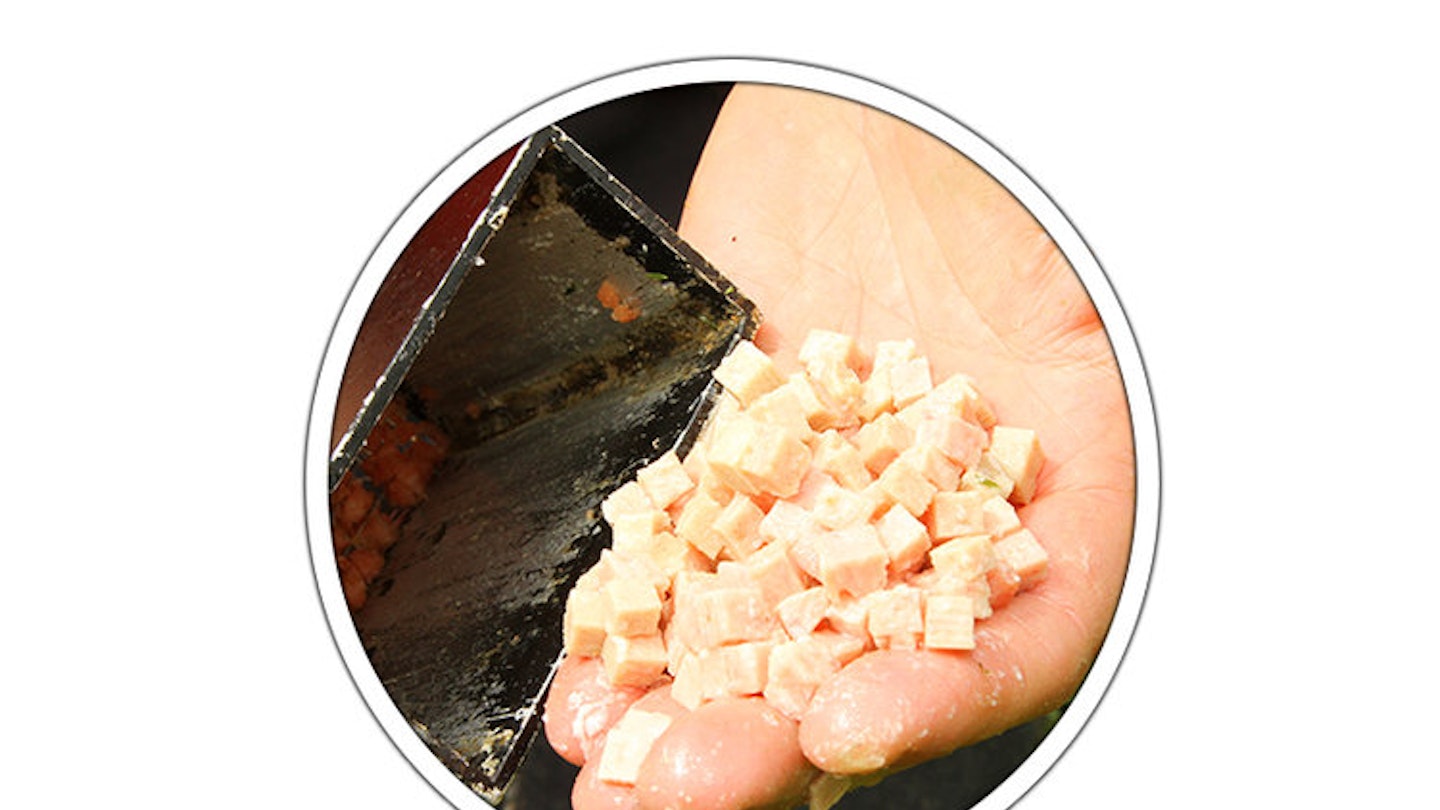Want to have an edge on commercials? then follow these great fishing tips from top match angler Steve Ringer as he guides us through the steps he takes when fishing shallow.
GET ON A JIGGA RIG
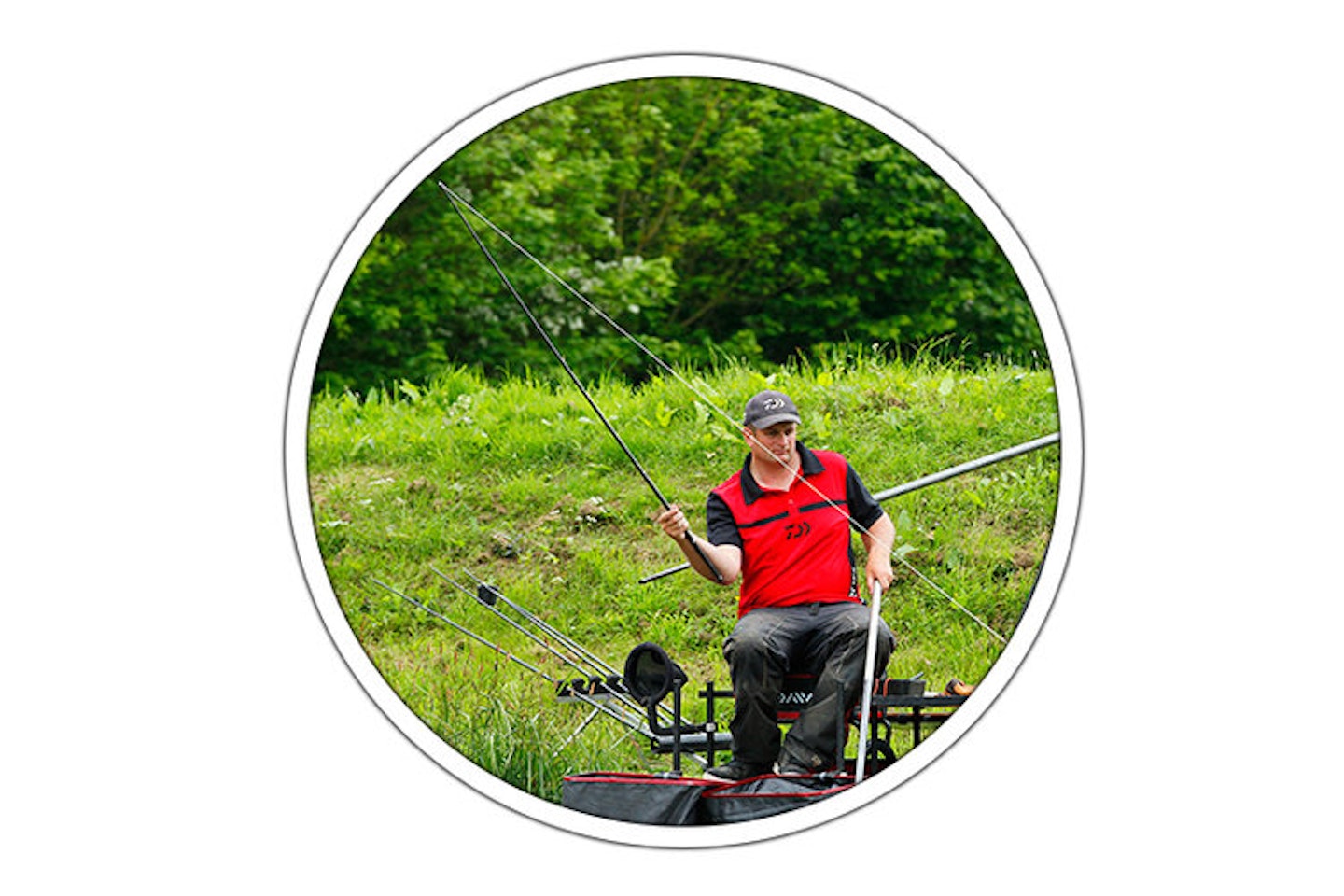
A Jigga float is a dibber-style float with a tube running through it. It runs freely up and down the mainline, resting only on a float stop set 4ins from the hook.
As you lower the rig in, the float stays on the surface and the hookbait falls through the water as you lower the pole-tip down.
The depth at which you fish is controlled by how high or low you have the pole-tip from the water. This way you are covering a lot more levels in the water, and if a fish sucks the hookbait in it simply hooks itself against the top of the pole, due to the tight line between pole-tip and hookbait.
The float never moves and the first you will know of a bite is when the fish hooks itself and elastic streams from the top of the pole – there’s no striking and missing bites.
TRY BANDED CASTERS
.png?auto=format&w=1440&q=80)
Hair-rigged casters are deadly for catching F1s shallow, but how do you hair-rig a caster without crushing it?
The trick is to use a bait band, and it’s a case of pushing the caster inside the band so it grips the bait and holds it in place.
You’ll find that the bait is tougher than you think when set up this way, and quite often I can catch five or six fish without having to change the hookbait.
As the caster falls side-on through the water at the same pace as the loose offerings, it appears more natural, and this can make a big difference with F1s.
CHOOSE THE RIGHT FLOATS
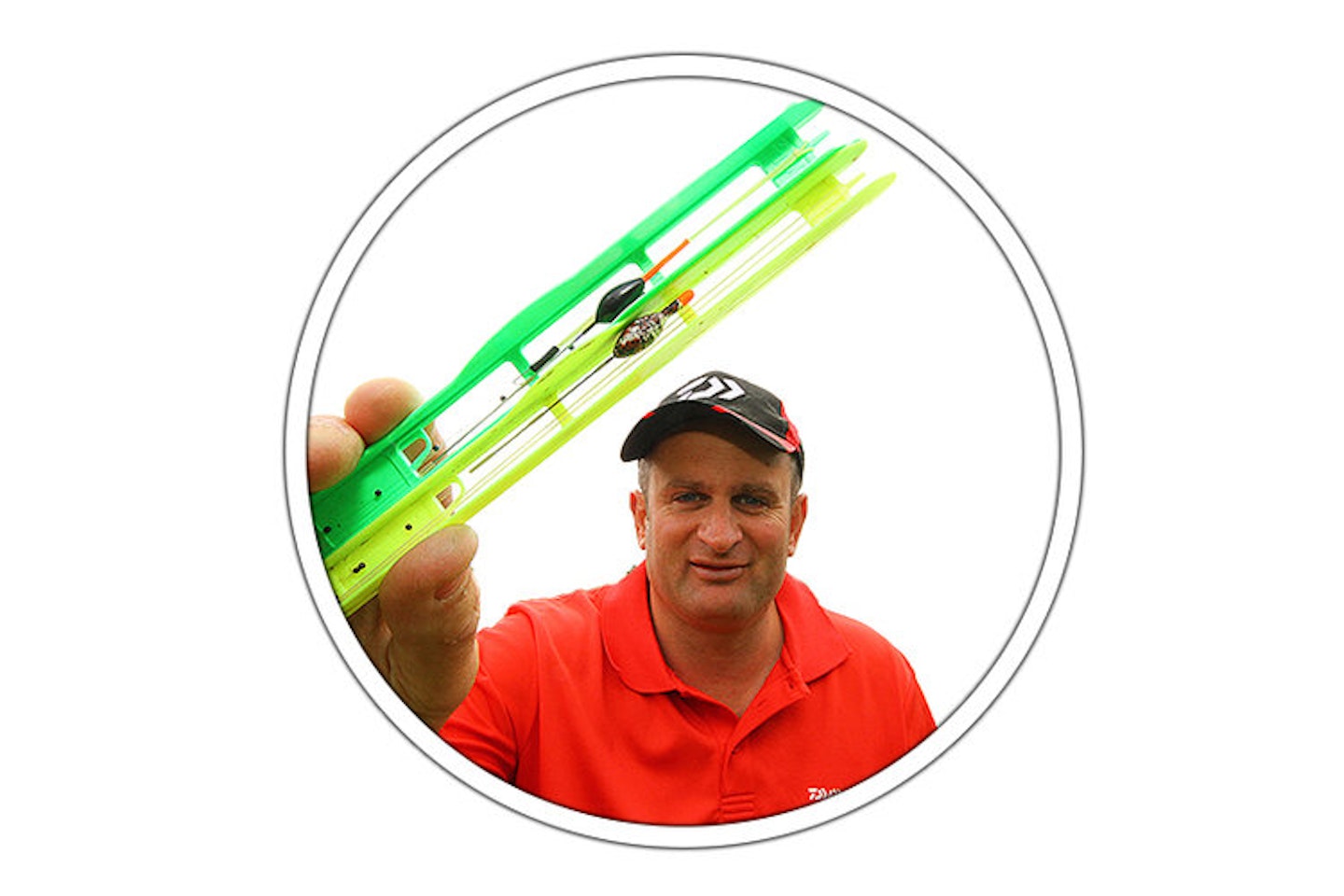
I choose between two rigs for shallow fishing. In swims 12ins deep or less I will use an MW Cookie, a short dibber-style pattern which is ideal for fishing extremely shallow.
If I want to fish a bit deeper, from 12ins to 2ft, my float choice will be a 0.1g KC Carpa Ape. The wire stem and nylon bristle of this pattern offer more stability, making this float more suitable for fishing that little bit deeper.
BE POSITIVE WITH SHOTTING

When fishing at 12ins or less I don’t have any shot down the line so I get a slow fall of the hookbait. However, from time to time missed bites can be a problem and then I will fish a little bulk of four No 11s set 4ins from the hook to make the rig a lot more positive.
From 18ins-2ft I fish with six No 11s down the line. These are strung out, with the bottom shot 4ins from the hook and the rest spaced above at 1ins intervals.
FISH SHORT HOOKLENGTHS
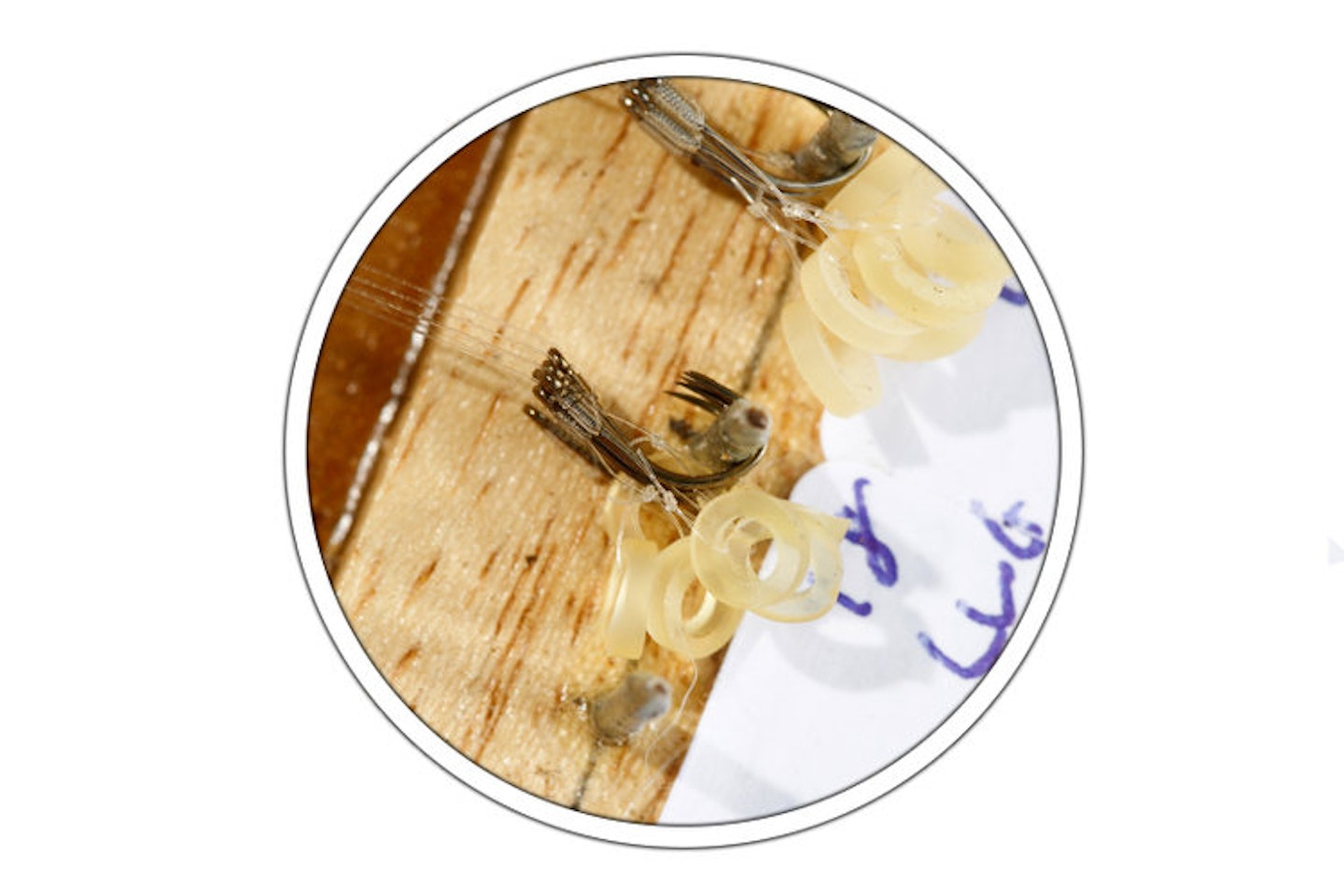
For most of my shallow fishing I’m targeting carp in the 3lb-8lb bracket, so my mainline is 0.17mm Guru N-Gauge to a 4ins hooklength of 0.15mm.
When fishing shallow I always like to use a short hooklength. This allows me to make the rig more positive, should the need arise, by putting a shot near the hook without having to put it on the hooklength itself.
Check out what the perfect hooklength is here
HAIR-RIG YOUR BAITS
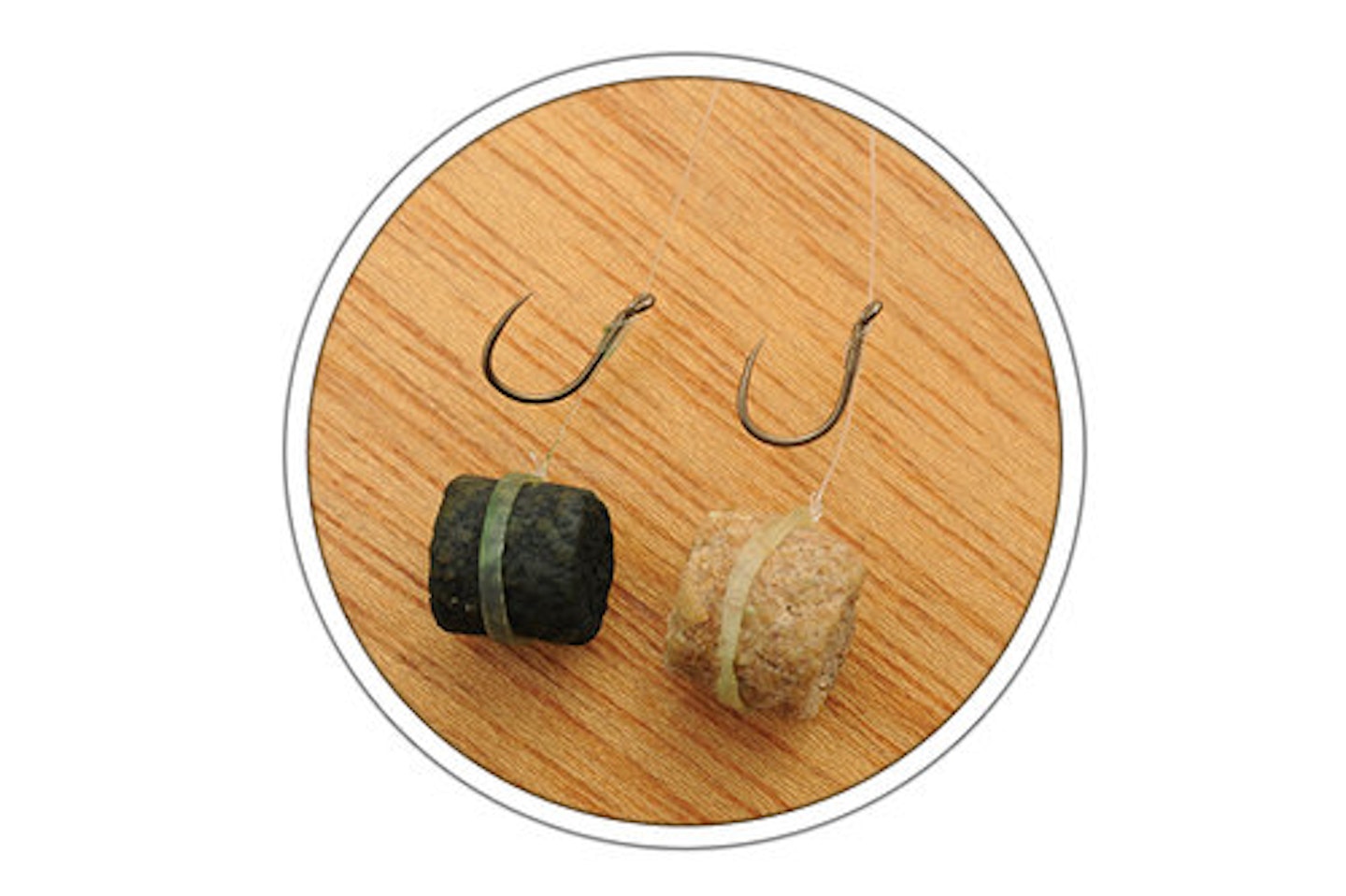
I use an eyed hook for shallow fishing so I can present the bait on a hair with the use of a band. The hookbait falls naturally through the water and the whole hook is free, so nothing hinders a decent hookhold.
My hook choice depends on the bait I’m fishing but, for example, if I’m fishing hard pellets I will use either a size 16 or 18 eyed LWG. If it’s solid with fish and I’m bagging I’ll use a size 16.
MAKE A NOISE

Making a noise when fishing shallow draws fish into your swim. Tapping your pole-tip on the surface mimics the sound of bait hitting the water, and when fish arrive, the only bait there is your hookbait. Bites will be positive.
Slapping your rig in is another deadly trick, and I will do this three or four times to create maxium surface noise. Not all fisheries allow slapping, however, so check with yours before you go ahead and give it a go.
LONG LINE FOR WARY CARP
A little trick I use a lot when fishing shallow is to set up a long line rig which I can use for flicking past my feed. There are two advantages to this – first, I can use it to pick off any wary fish that are sitting at the back of my feed.
This is something that happens a lot as a session progresses and a few fish have been caught. The rest can quickly become cagey and back away from both the pole waving about above them and the loosefeed itself.
All you need is a relatively short float which takes plenty of weight –something like a 4x14 – and I will have up to 5ft of line between the pole float and pole-tip.
This allows me to cover a much bigger area than would be the case with a standard short line rig.
USE A SOFTER ELASTIC
For me there’s only one elastic for shallow fishing, and that’s White Hydro.
It’s very soft and extremely forgiving, and when fishing it with a puller kit I can land pretty much anything on it, from a 1lb skimmer to a 10lb carp.
Being initially soft, White Hydro has the benefit of allowing me to lift into a fish and then, while the elastic is doing the work, I can still feed the swim until the fish slows down and I can start to ship back.
Another advantage is that if I’m catching big skimmers or even F1s the softness of White Hydro means they don’t splash all over the surface, something that can spook the other fish in the swim.
TRY FEEDING CASTERS
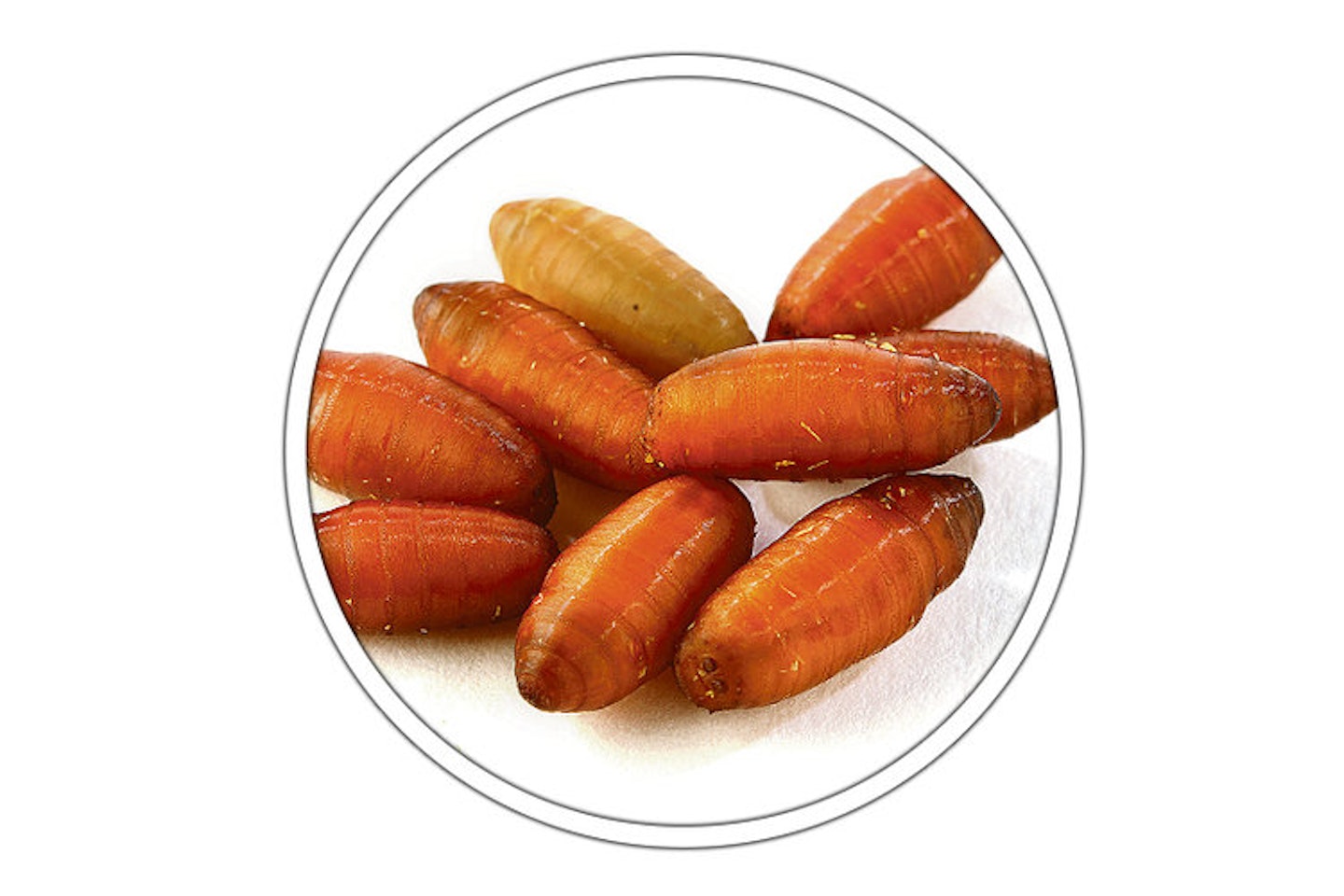
All species love casters, and they make a brilliant fish-attracting noise as they hit the surface of the water.
Once the carp arrive, though, there is no better bait for holding them than casters.
The only real downside to fishing casters shallow is the quantity required, as you need at least four pints to do it properly – you will have to feed off any small fish first in order to bring the carp into the swim.
BIG BAITS BRING MORE BITES
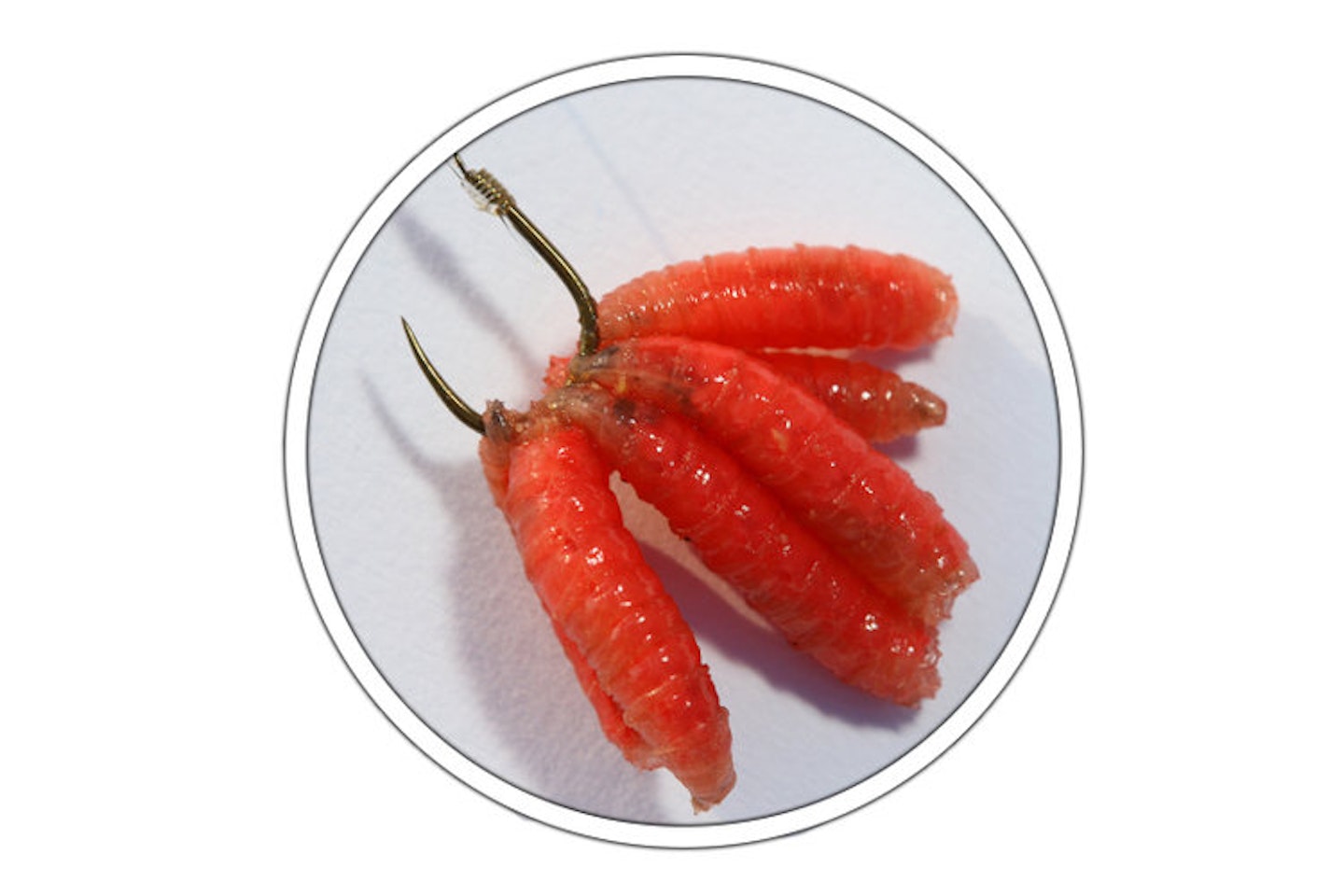
There’s nothing more frustrating than being able to see carp in the edge and then not be able to catch them. This is where big ‘target baits’ such as 10-12 dead red maggots really come into their own.
If you think about it, there are going to be lots of maggots on the bottom so if I fish just two or three on the hook it’s going to take a while for a carp to find them. Fish a bunch, however, and bites can be instant!
HARD PELLETS – KEEP FEEDING!
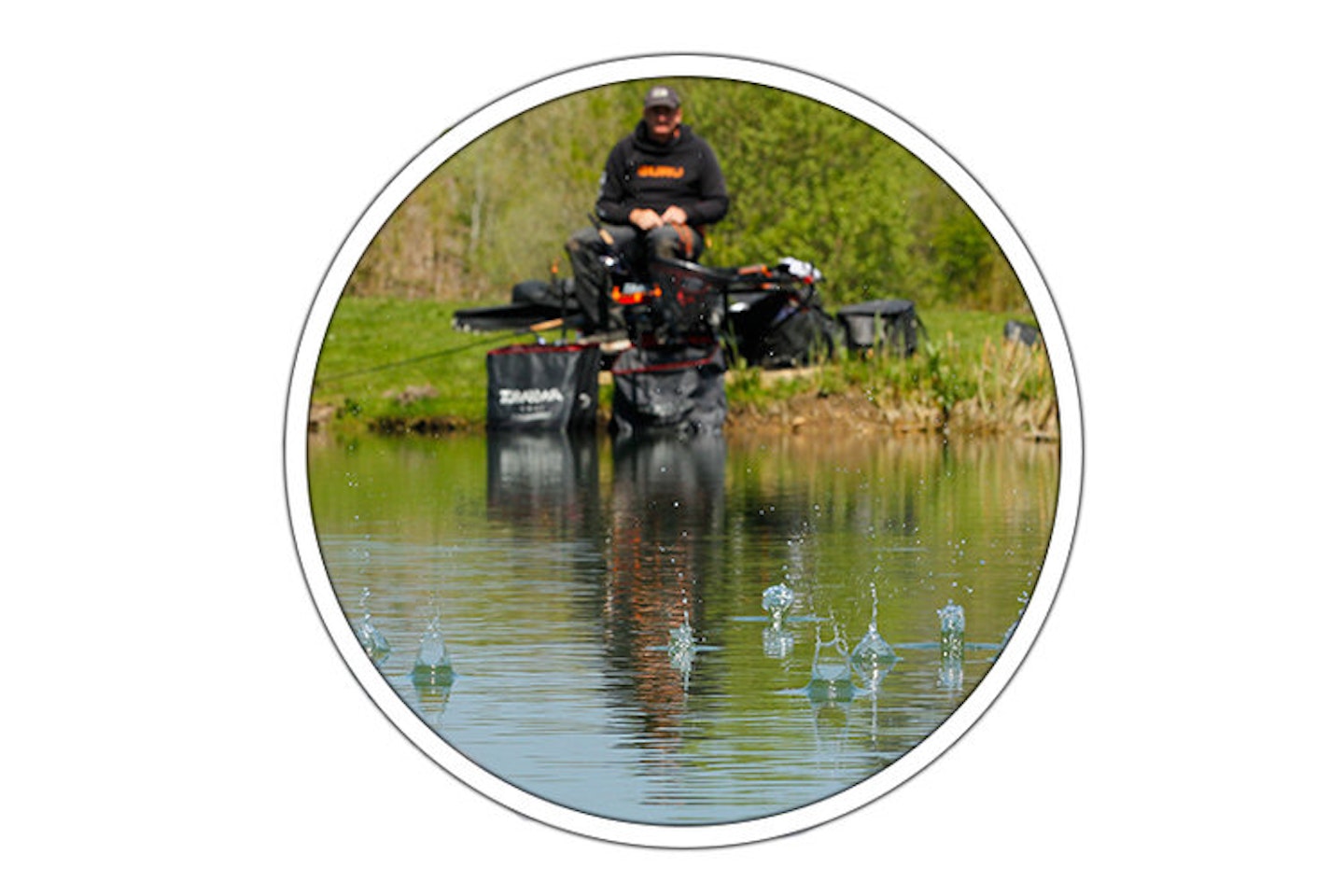
When not a lot is happening I try to draw a few fish into the swim by making a noise with hard pellets. I ping in three or four 6mm or 8mm pellets on top of the float every 20 seconds.
Carp will home in on the noise, but I’m not putting lots of bait on the bottom and risking killing the swim by feeding too much.
BLOW UP YOUR PELLETS
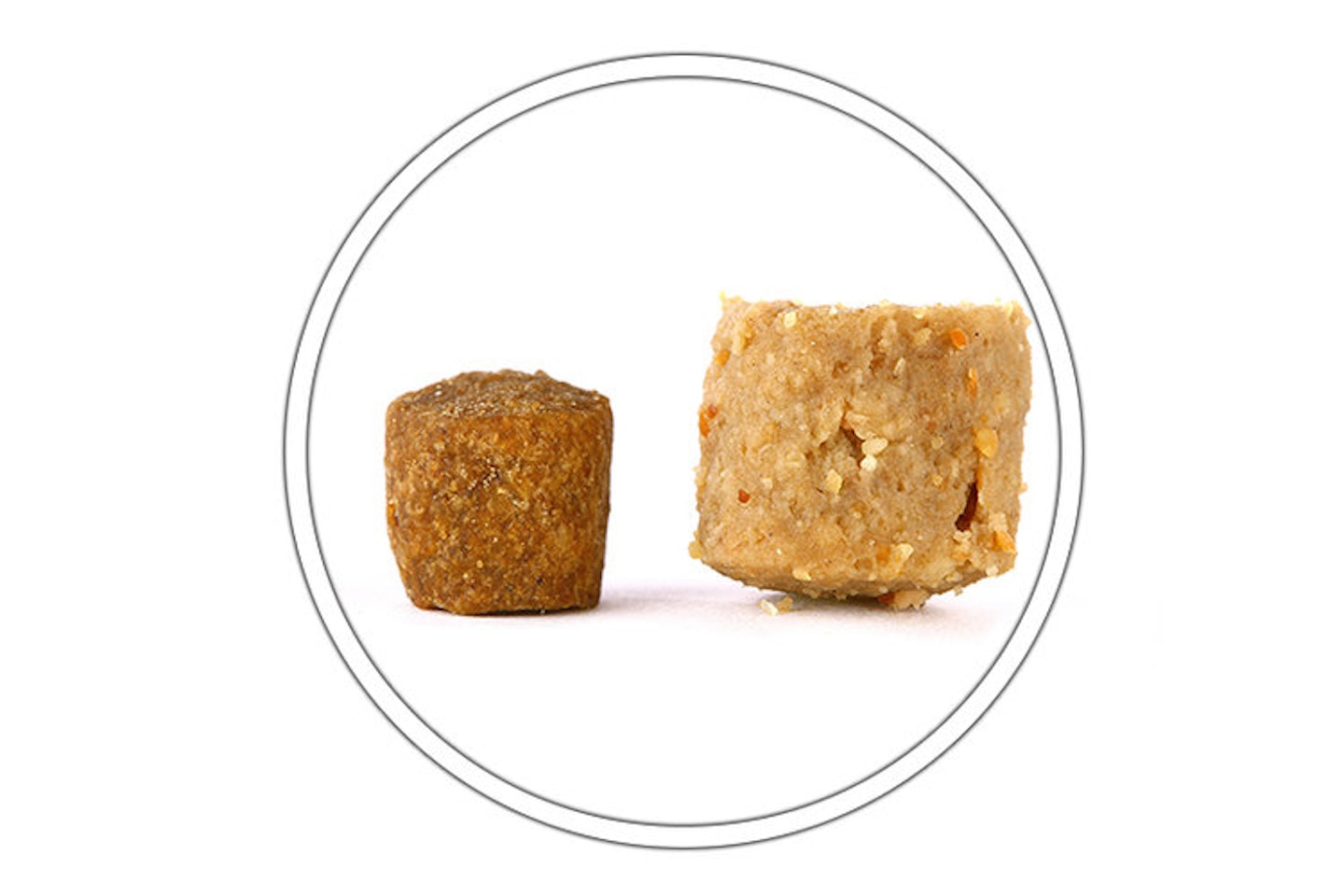
A few years back, while I was packing up, I noticed a few hard pellets had fallen under my seatbox and had taken on so much water they were almost twice the size and looked as though they’d been on the bottom for a while.
I decided to pump some hard 8mm pellets and leave them in water so that they ‘blew up’ into massive, soft pellets and it was staggering how many bites I got on them – try it!
RED MEAT
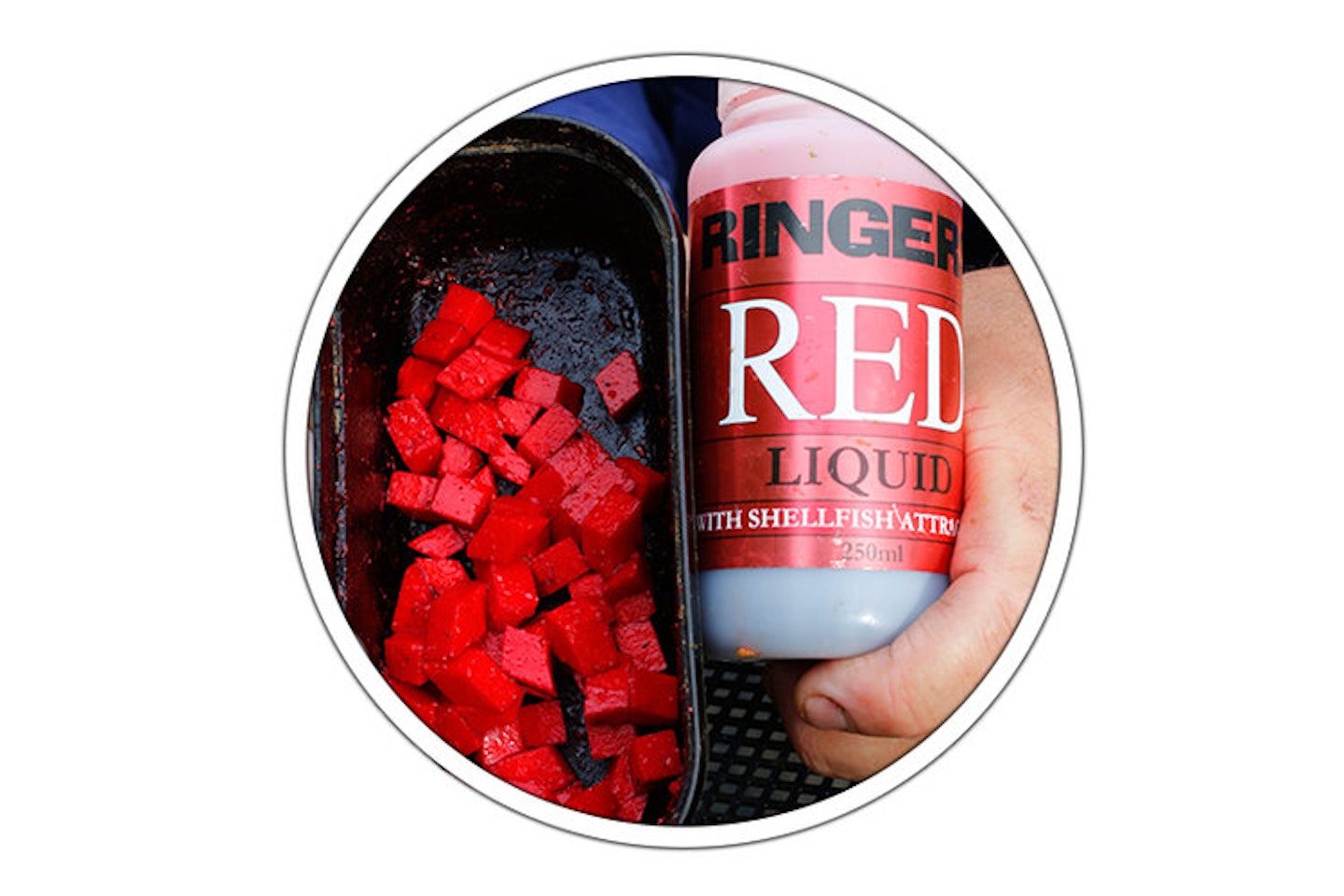
I love fishing meat, and nine times out of 10 I like to use it straight out of the tin –but when the water is coloured you need to switch to red cubes instead.
These cubes offer a strong silhouette and give the carp a bait they can really home in on.
I use Ringers Red Liquid to dye my cubes, but I will only dye my hookbait meat and not the cubes I’m using for feeding the swim.
DUMPING IN HEMP
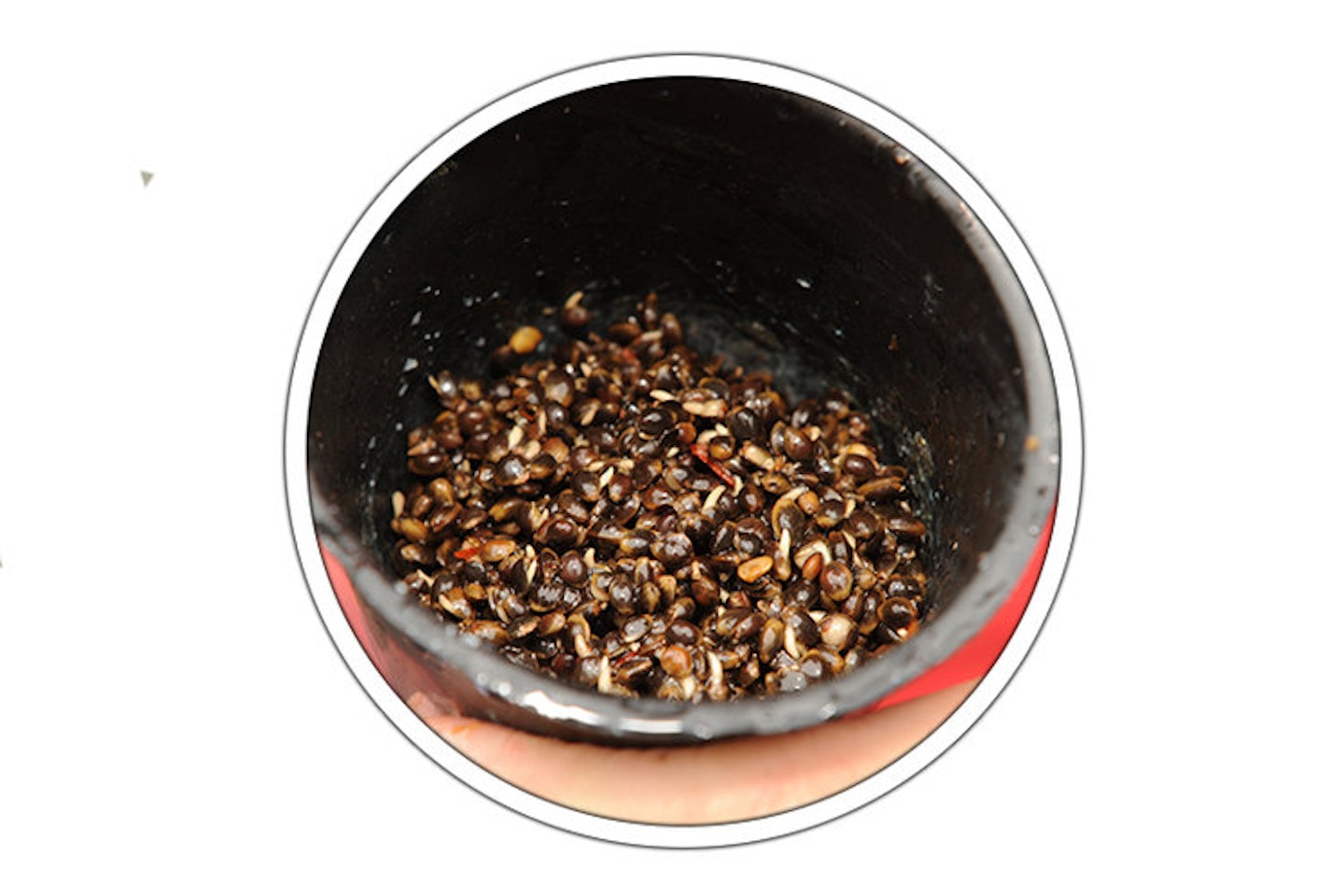
One way to prevent the foul-hooking of carp when fishing meat close in is to feed heavily with hemp. At the start I will pot in two-thirds of a large 250ml Drennan pot of hemp alone to form a bed.
Then, if I start to catch a few fish and begin to foul-hook the odd one, I will simply introduce another big pot of hemp to settle them back down again.
PACK IN THE PARTICLES
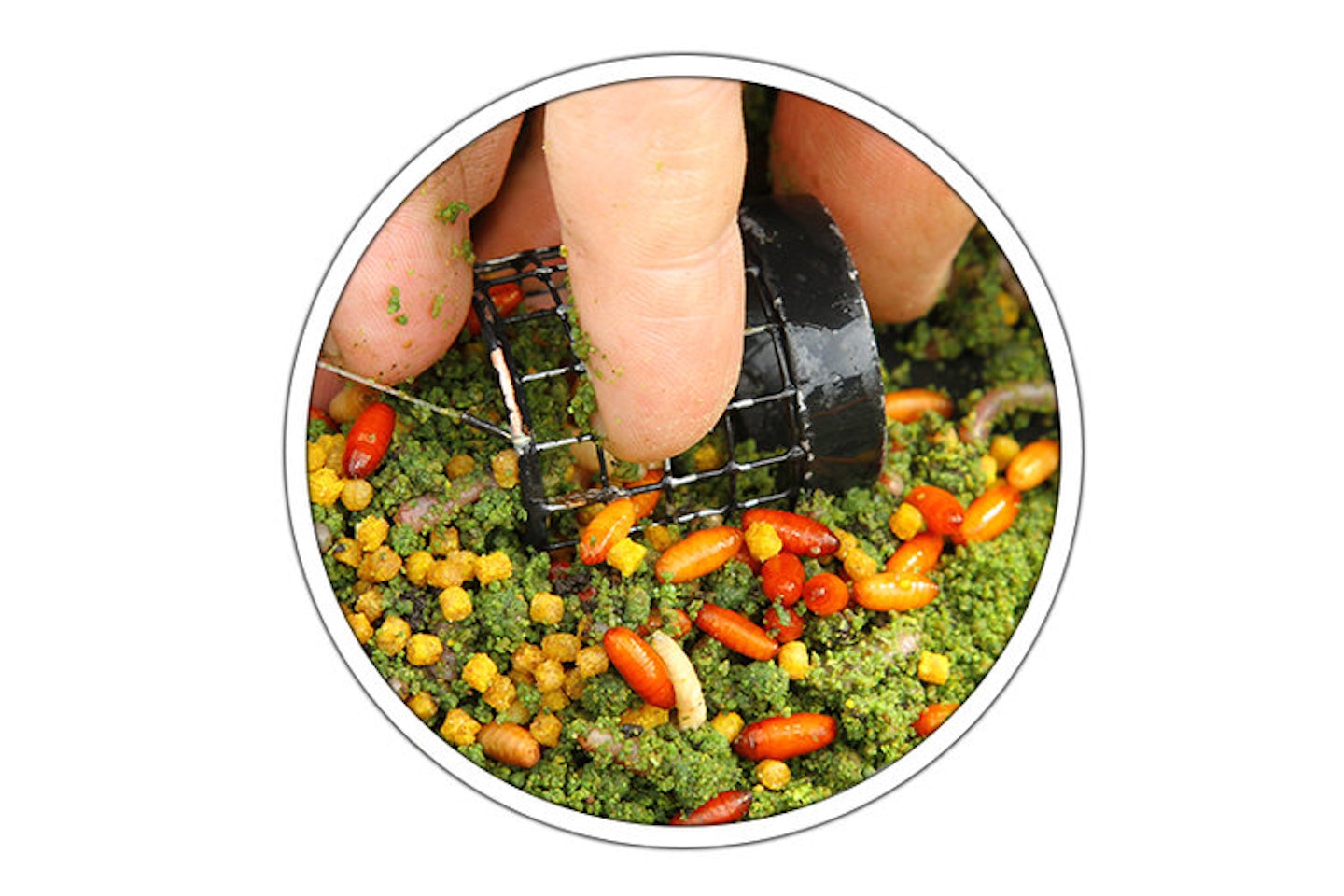
The secret to building a big weight of bream is to use as many particles – such as casters, pellets, and chopped worms – as you can cram into your groundbait.
Pile in the particles in the first hour then, when the bream turn up (which is ideally about 90 minutes into my session), I’ll have a lot more bait on the bottom than those around me and can hold the bream in the swim for much longer as a result.
HEAVY FEED CLOSE IN
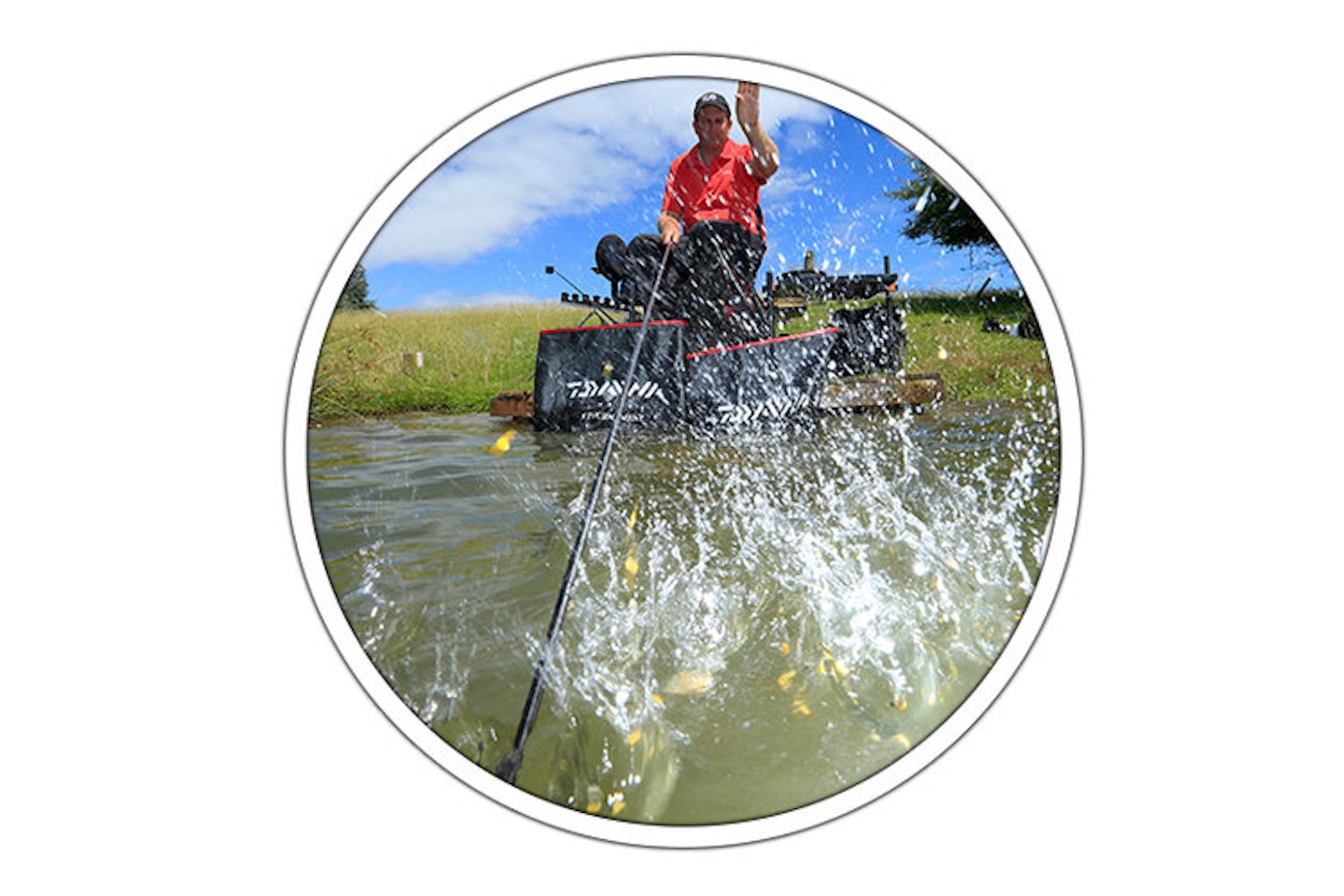
While most people use the margins as a ‘get out of jail card’ late in a match, I like to fish short on a top kit.
I lash in up to three handfuls of hemp, corn and meat to create the impression of someone packing up, then go straight in over the top. Quite often I will get a quick response. Keep lashing the bait in to try and make something happen and draw the fish in.
TWO ARE BETTER THAN ONE
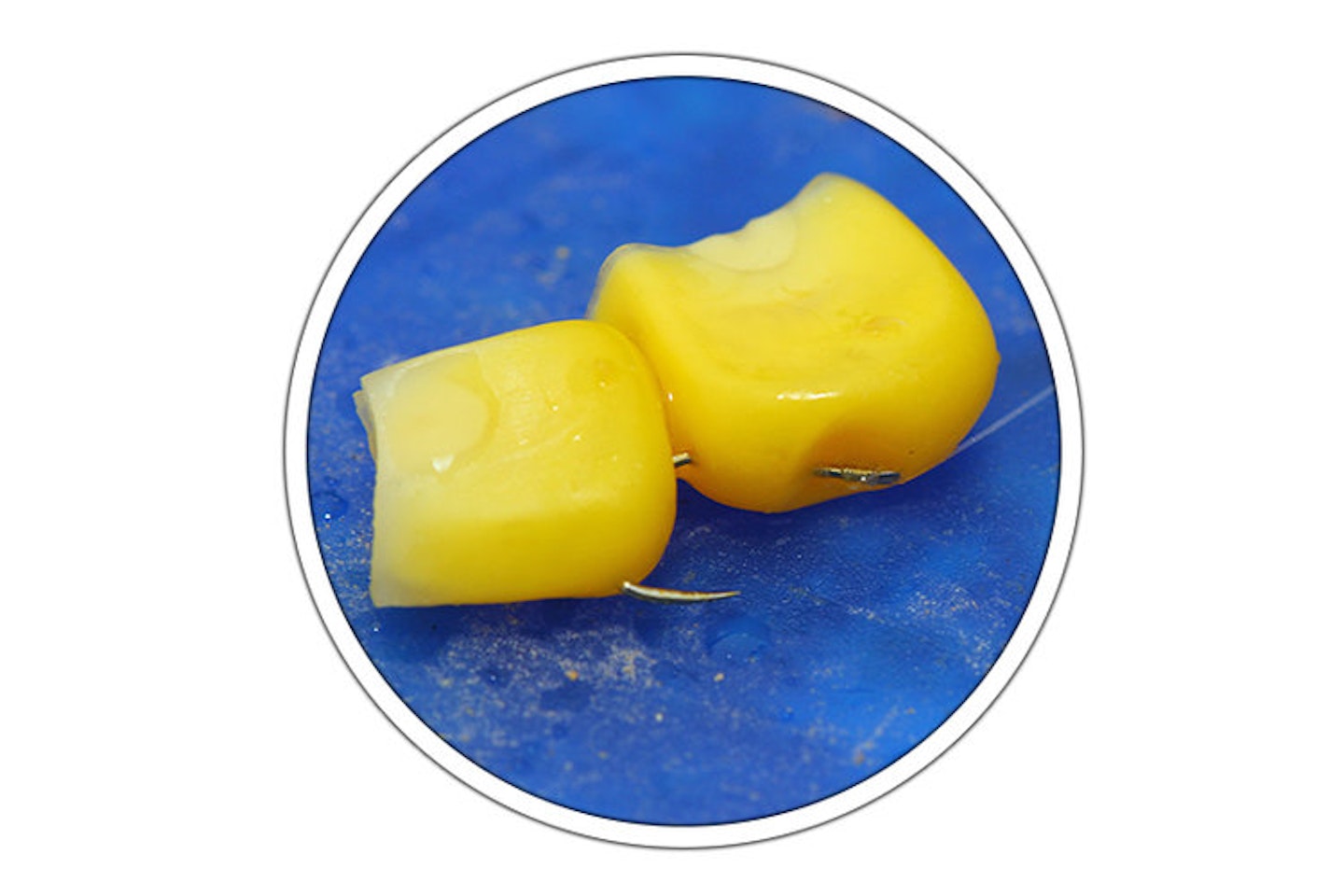
Sweetcorn is a fantastic hookbait, and I always find that two grains are better than one.
Loads of times I have caught on corn and alternated between single and double on the hook, only to find that two grains consistently produced quicker bites and bigger fish.
I think this is because the bigger bait stands out over the loose offerings and that two grains are treated with less suspicion than one.
STAND OUT OR BLEND IN?
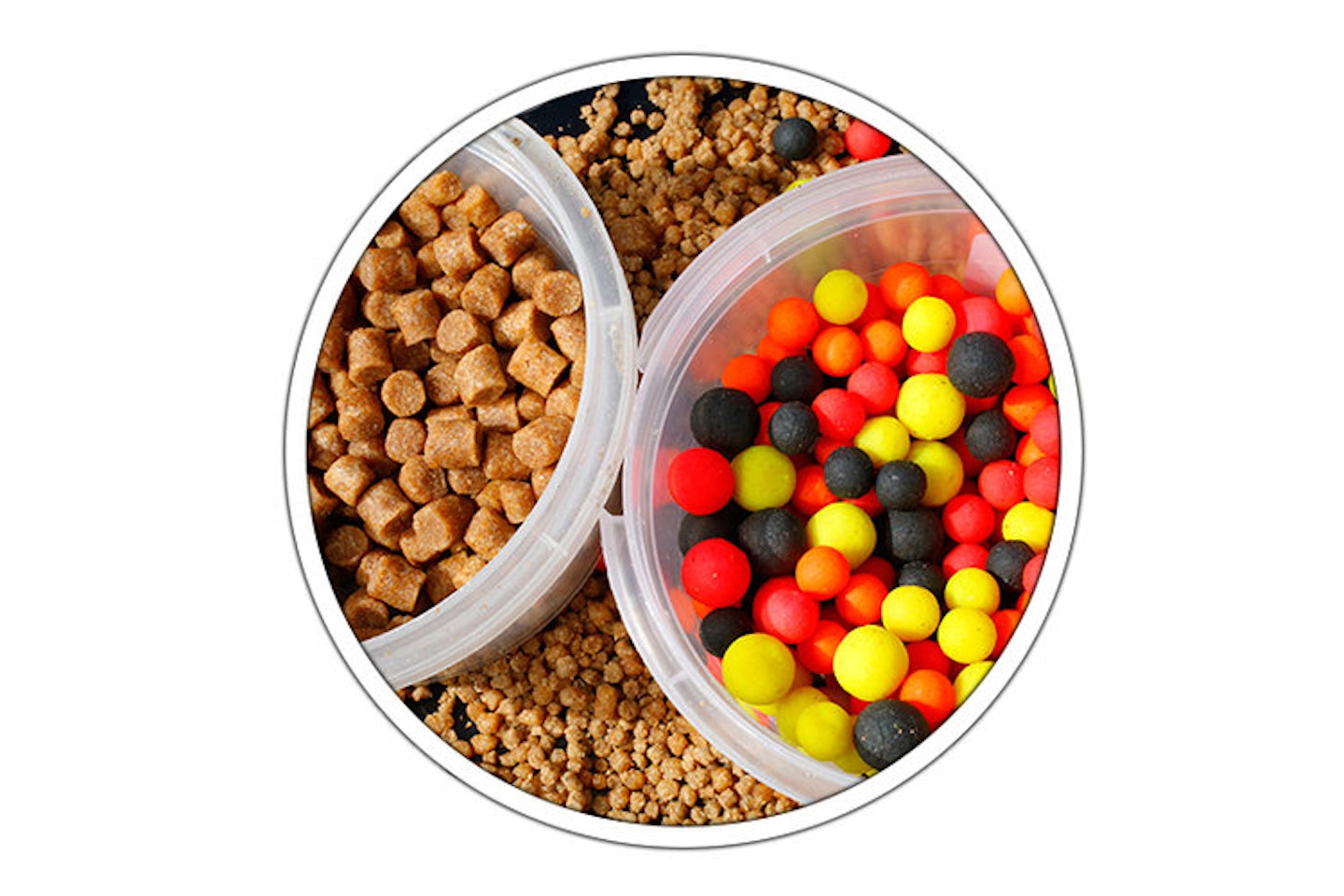
There are two types of baits you can use on the Method feeder – blend in and stand out.
Blend in baits are those such as hard pellets that match the pellets on the feeder. When the fishing is hard and the fish are picky they can be fooled into thinking it’s a safe meal.
If there are loads of fish in the swim then stand out baits such as mini fluoro boilies or bread really come into their own.
These work because they are highly visible and give carp something they can home in on.
DOUBLE CUT YOUR MEAT
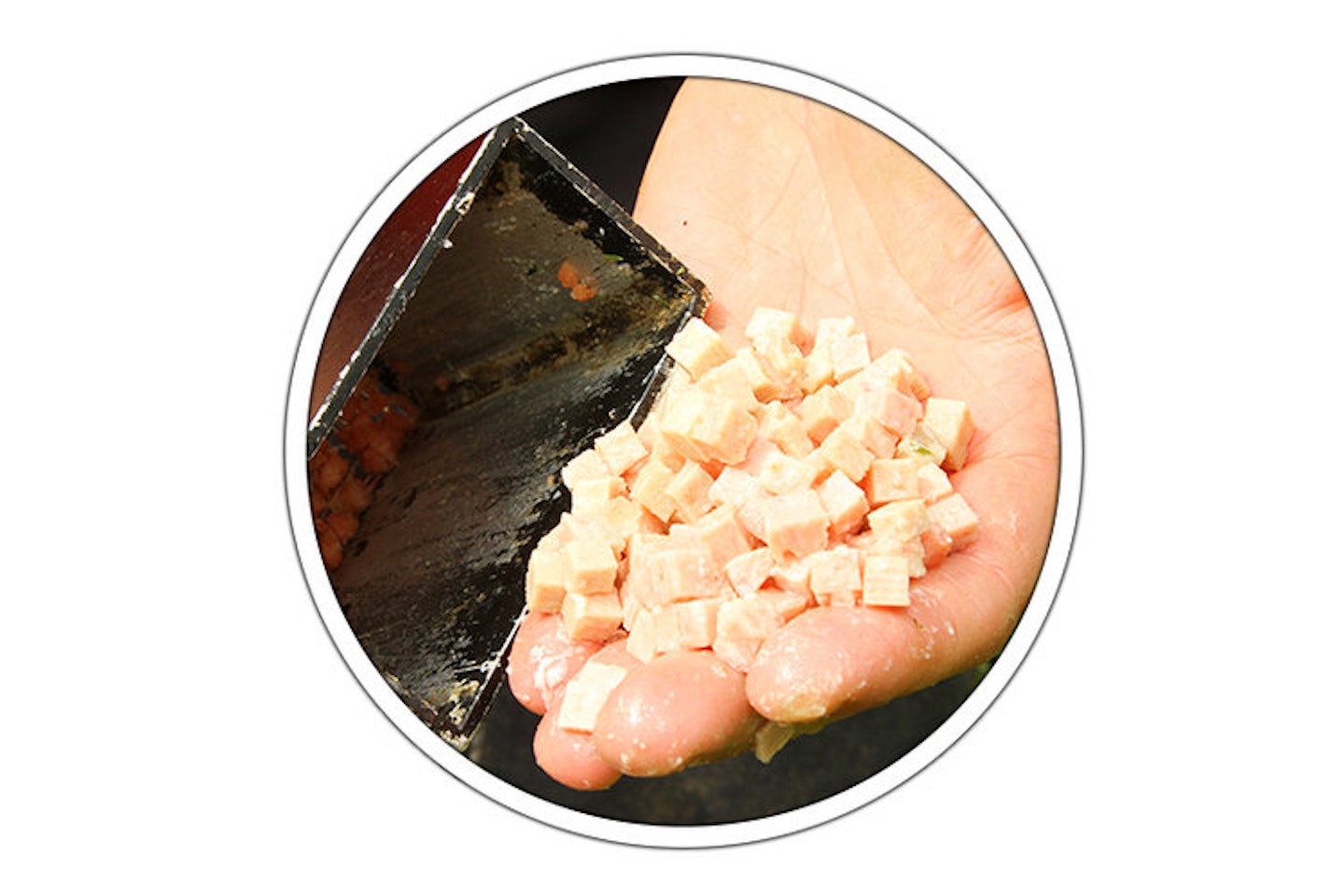
A great trick for shallow water is to make a cloudy chopped meat mix. I pass around a third of my 6mm meat cubes back through the cutter, giving myself a feed made up of all different sized pieces of meat which, when fed, almost explode on the water’s surface.
Add a few 6mm cubes to your feed and once the fish arrive they will follow the 6mm cubes down to the bottom, where you can catch them.
